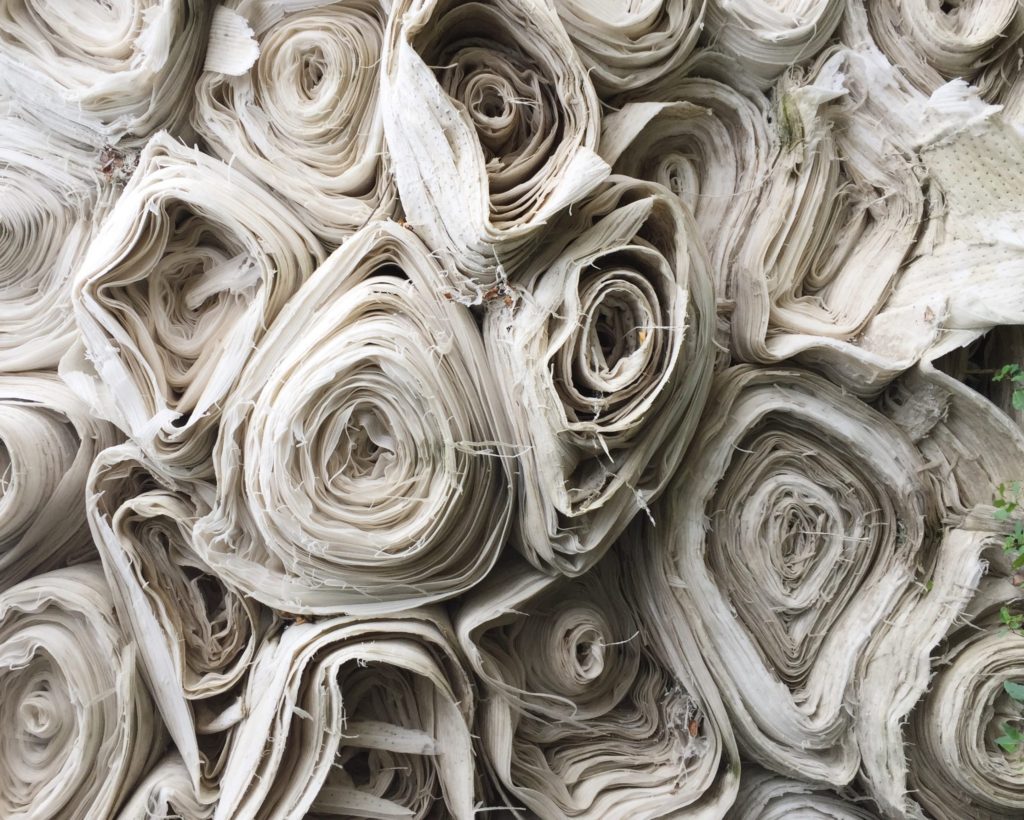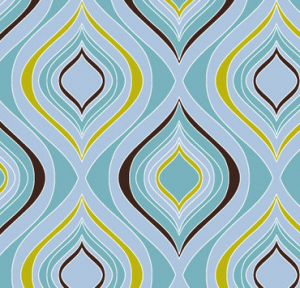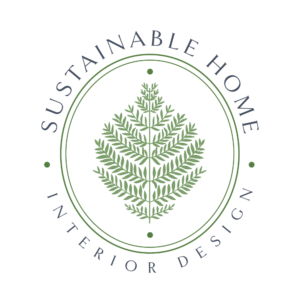
I spent my early career as a textile designer, and love textiles. But like any modern manufactured product, fabrics are a complex substance with many inputs. The reality is that there are a lot of chemical inputs that might be unhealthy, but it is challenging assessing the level of exposure/risk that is appropriate for you. I often use conventional materials in my interior design process, but it is important to know what the major areas of concern are, and how to evaluate them. I also am a fairly relaxed person (despite all my specialized scary knowledge) and think that the goal should be minimizing exposure. It is impossible to eliminate all chemicals in our lives, but it is sensible to know when you are being exposed to those substances that raise the most concern among scientists.
I recently had a chance to do some research about the various chemical components of fabric manufacturing. Green Home Guide has me write answers their Ask A Pro section of their excellen web site, and someone wrote in with a question about quilting fabrics. I have copied my answer below, but the bottom line for me continues to be the same: be informed about the component parts of the products you are bringing into your home, and use your best judgement to select the least toxic, the most natural, product that meets your functional design needs.
The Question
July 4, 2010 Is there a way to wash/clean regular fabrics that would remove all the toxic residues and therefore be as healthy as organic fabrics? I am trying to make a baby quilt but at a cost I could afford and yet be healthy Asked by Karen Shaw Plano, TX
The Answer
I really wish I could answer yes to this question, because sourcing truly healthy fabrics is one of the more frustrating things I have to do in my practice. However, the answer is more complex. The very short answer is that washing does eliminate some of the toxins, but absolutely cannot eliminate all. It is very possible to get chemical free fabrics, the most dependable standard for healthy fabric is to look for fabrics, and not just yarns, that are organically grown and GOTS certified. GOTS stands for Global Organic Textile Standard, and examines at the chemical inputs into the fabric creation process, rather than whether that cotton was grown organically. Organically grown cotton is not sprayed during the growing process. There are many charming quilt fabrics that are both organic and GOTS certified. I love the fabrics by Harmony Art and that Modern Organic Fabrics stock. Harmony Art also has a list of retailers that carry her fabrics, and each of these stores carries other lines that are GOTS certified. It is important to ask for each fabric, because retailers also carry Oeko-Tex 100 certified fabrics, which are not as carefully monitored as far as the inputs. They are cleaner to use, but the production chemicals end up in the environment. In order to understand the chemical inputs Patty Grossman, of O EcoTextiles, helped me look at the steps of cotton fabric production. – As the cotton is grown it is sprayed with chemical pesticides, defoliants, and weed killers. The average acre of American cotton receives 4.3 pounds of pesticides. Cotton that is not labeled organic also could be grown from GMO seeds, seeds that have their genetic make up changed to make it resistant to herbicides. Studies have shown that pesticides are present inside the cotton fibers after harvest, and that they cannot be washed out using a home washing machine – As the cotton fibers are processed into yarns, and woven into fabric, they are washed, treated for texture, and bleached or brightened. These chemicals, often including dioxins, can be present in the finished textile. – The woven textile is dyed or printed to give it the color, and often treated for softness, wrinkle resistance, or other qualities. Printed textiles often have both heavy metals (such as cadmium) and plasticizers (like phthalates) in their printing inks. Wrinkle or stain resistant fabrics can contain chemicals such as formaldehyde. And these treatments and colorants are well designed by the chemists. They are designed to NOT wash out. The dyes, for instance, are called “fiber reactive” dyes because they chemically bind with the fiber molecules in order to remain colorfast. The chemical components of your fabric dye are there as long as the color is there. -In the home furnishings industry fabrics are often coated for stain resistance, back coated to give a fabric the dimensional stability to be used as upholstery, and must be fire resistant. Many of these chemicals are types that have been proven to be harmful, and to be bio-accumulative. This means that increased exposure leads to increased levels of these chemicals in your body.

Fabric, like any modern industrial product, is a complex, multi-component item. At each step in a fabric’s production it can have chemical inputs added to its makeup. Over 2,000 chemical s are regularly used in textile production, some of them so toxic that they are outlawed in other industries. The final fabric is, by weight, over 10% synthetic chemicals of various types
Decision making about acceptable risk is challenging, especially when the safer product (that they had to spend less on chemicals to make! I’m just saying…) is more expensive. It is hard for a consumer to know exactly how concerned to be. I use the precautionary principal as my standard of safety for products that I specify,
If a product has a suspected risk of harm to the public or the environment, it is sensible to eliminate exposure to that product until further scientific findings emerge that provide sound evidence that no harm will result. Simply stated, if it might have a health effect, don’t expose yourself, until it has been PROVEN that there is no effect.
This is the approach to chemical regulation used by the EU. Unfortunately, the US system allows chemicals to be used until research proves there is some reason to regulate use of that chemical.Ok, enough bad news. The good news, and the reason I love the opportunity to answer these questions, is that knowledge is power. It is easy and important that you ask a fabric supplier whether their fabric is GOTS certified, and there are many sources of fabrics that are. Green fabric lines should know whether they are certified, and this independently verified standard is your strongest tool in evaluating whether a fabric is truly safe and chemical free. Each person can assess the risk, relative to their level of concern and take the steps to minimize their exposure that they feel are necessary.We have discussed mostly cotton, but there are beautiful fabrics in every market sector. I love the O Ecotextiles upholstery and drapery fabrics, the lush wovens of Twill Textiles Climatex collection, and the groovy prints of Mod Green Pod. Every time you vote with your dollars by purchasing clean fabrics, you are creating change in the marketplace. Companies produce things that sell well, and now we have the knowledge that allows us to buy only safe fabric.

